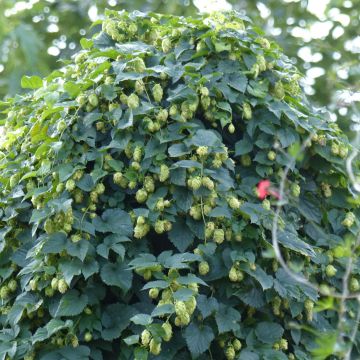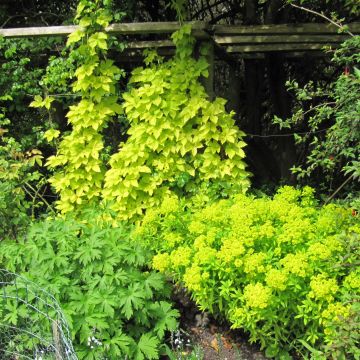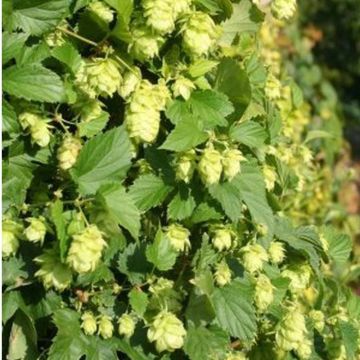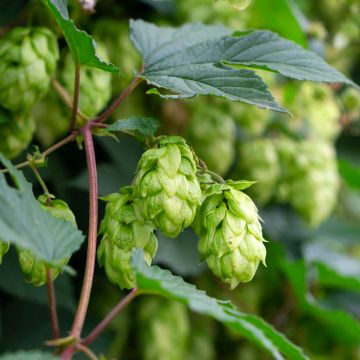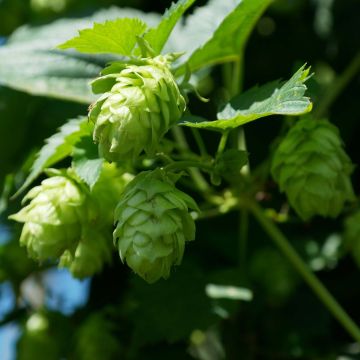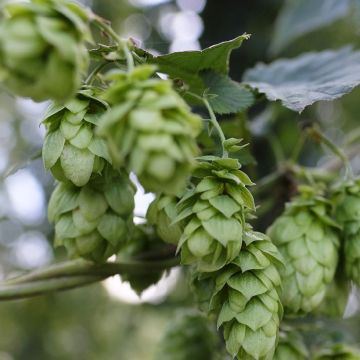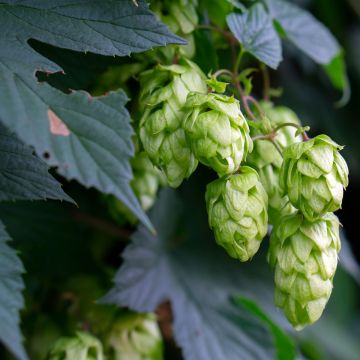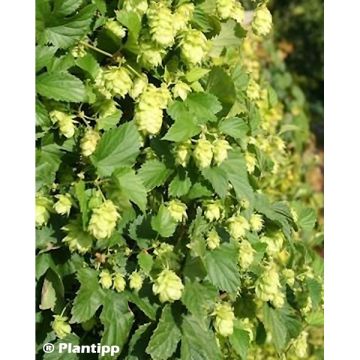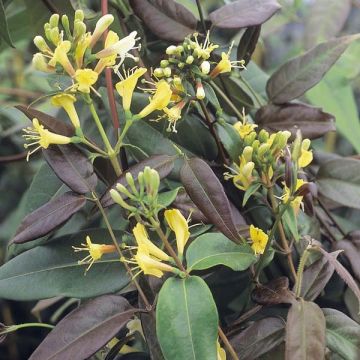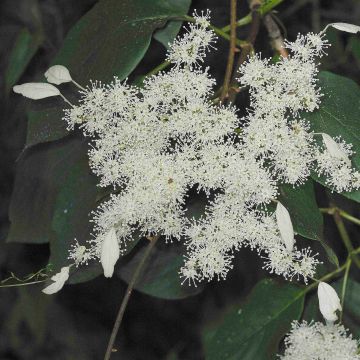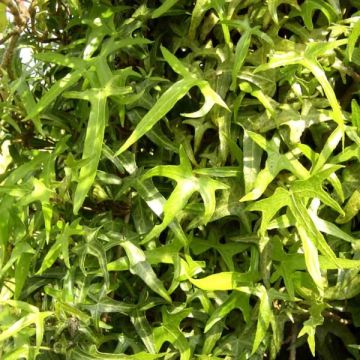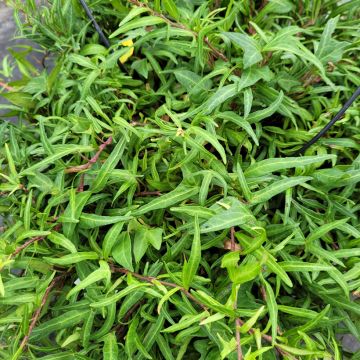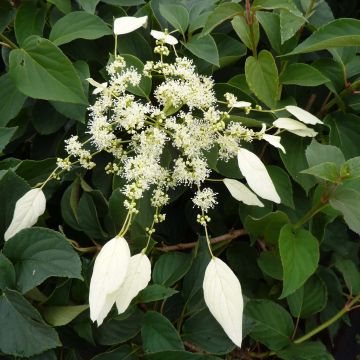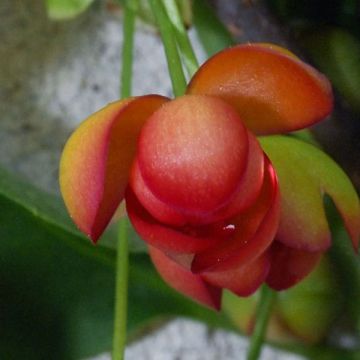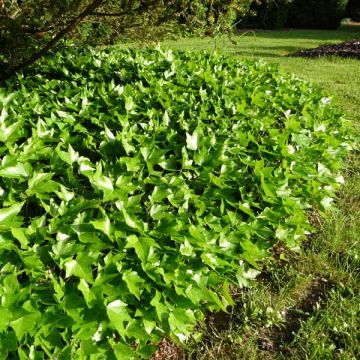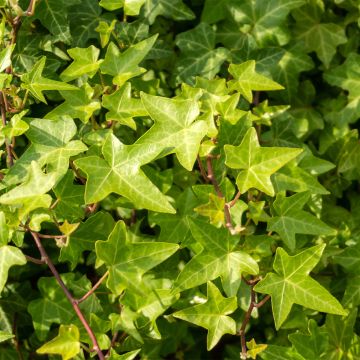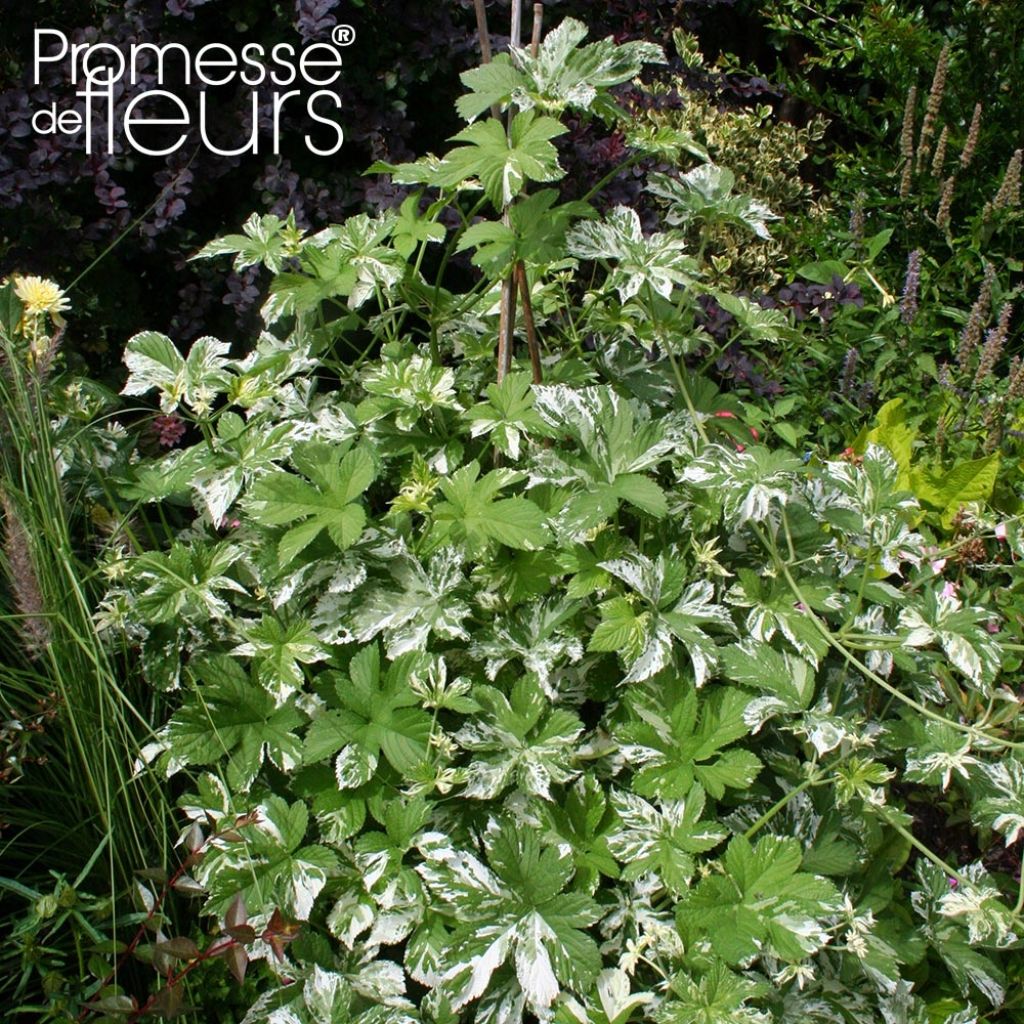

Humulus japonicus Variegatus
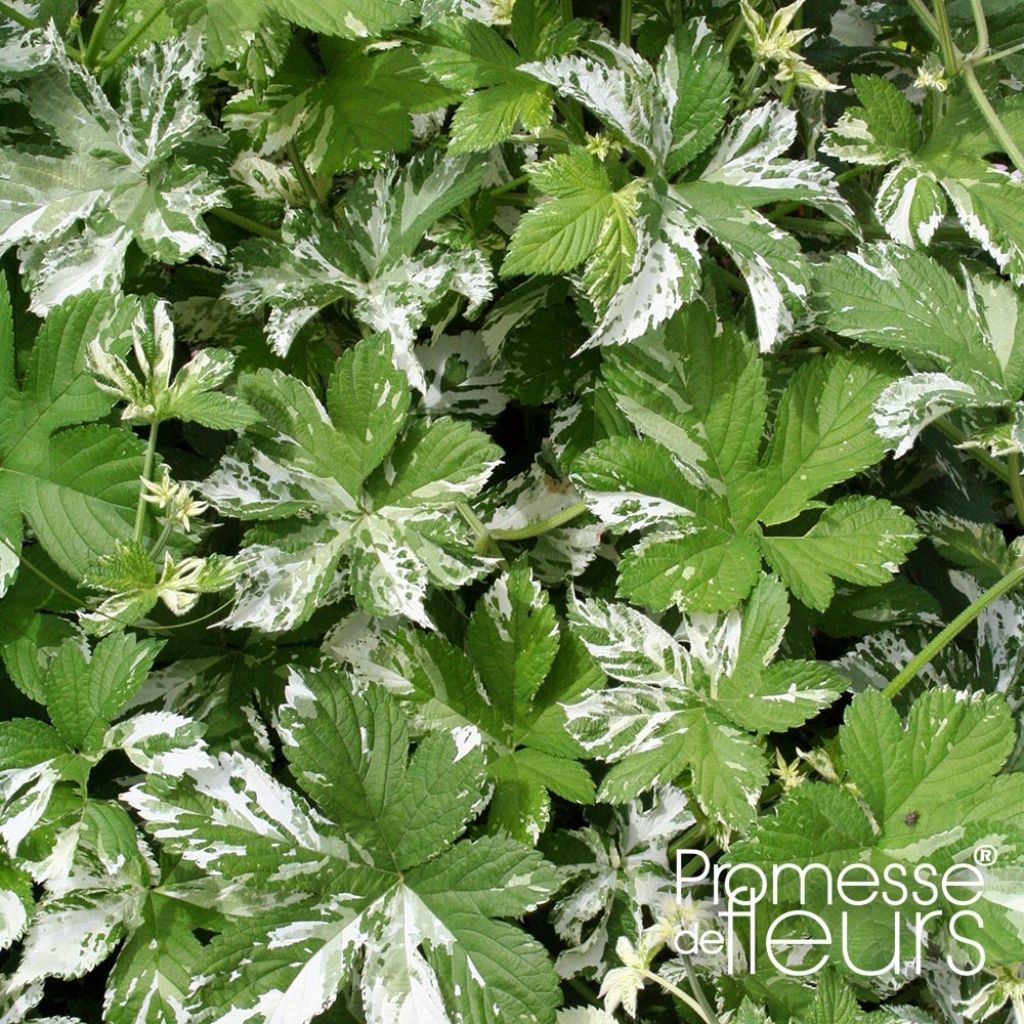

Humulus japonicus Variegatus
Humulus japonicus Variegatus
Humulus japonicus Variegatus
Japanese Hop, Variegated Japanese Hop
Why not try an alternative variety in stock?
View all →This plant carries a 12 months recovery warranty
More information
We guarantee the quality of our plants for a full growing cycle, and will replace at our expense any plant that fails to recover under normal climatic and planting conditions.
From €5.90 for pickup delivery and €6.90 for home delivery
Express home delivery from €8.90.
Delivery to Corse prohibited: UE law prohibits the import of this plant from mainland France to Corse as part of the fight against Xylella fastidiosa. Please accept our sincere apologies.
More information
Does this plant fit my garden?
Set up your Plantfit profile →
Description
Humulus japonicus 'Variegatus' is a very rare and vigorous variety of Japanese Hops, with particularly ornamental variegation! Its leaves are deeply lobed with a marbled light green and metallic white, sometimes shaded with pink. It is a deciduous climbing perennial slightly less hardy than other hops. Use it to decorate a wall, hedge, or unsightly fence or to cover a pergola. It prefers sheltered locations in good garden soil, moist, deep, in full sun or partial shade. It can be grown in the ground or in a pot! It tolerates lime well and only dislikes scorching sun and drying winds.
Humulus japonicus is one of the three species of hops and belongs to the Cannabaceae family, just like hemp and hackberry. It is native to Japan and China where it populates moist and humid places such as along watercourses and woodland edges. It is a perennial herbaceous vine with a large fleshy root that regenerates all its aerial vegetation each year and spends the winter dormant underground. Hops are dioecious plants, meaning that there are male and female plants. Humulus japonicus differs from its European cousin by having more divided leaves, bearing 5 to 7 lobes, and stems that twist counter-clockwise. Its flowers are rather insignificant. It easily self-seeds and is considered an invasive species in North America.
In spring, the Japanese Hops 'Variegatus' develops herbaceous stems that emerge from the slightly suckering stump, quickly twining around any support available. Its growth is very fast but it has a more restricted development than the species. An adult plant will reach 3m (10ft) in height with a spread of 1m (3ft). Male plants bear flowers in long panicles, reaching a maximum of 2.5cm (1in). Female flowers consist of small pedunculate spikes, even less noticeable. The stems are quadrangular, hairy, and striate. They bear rough leaves, beautifully divided into ovate, pointed, and dentate lobes. They lose their variegation in the shade and die with the first frost. This variety self-seeds less and is therefore much less invasive than the species.
In ornamental gardens, the Japanese Hops 'Variegatus' makes an excellent complement to a small climbing rose (Ghislaine de Feligonde, New Dawn...) and pairs well with a robust clematis with blue (Blue Angel), white (Miss Bateman), or pink (Little Mermaid, Josephine) flowers. An evergreen honeysuckle like Lonicera Copper Beauty, with yellow to orange-toned flowers, will form an interesting combination with this pretty climber, compensating for its absence in winter while flowering alongside its foliage in summer. This small hops plant will give a second life to an old bush, conceal a tired garden shed or an unsightly small structure, and enhance the trellis of a terrace or a wooden arbour. The flowers, picked in September, make beautiful dried bouquets. It can be easily grown in a large pot, as long as it is regularly watered and fertilised!
Report an error about the product description
Humulus japonicus Variegatus in pictures
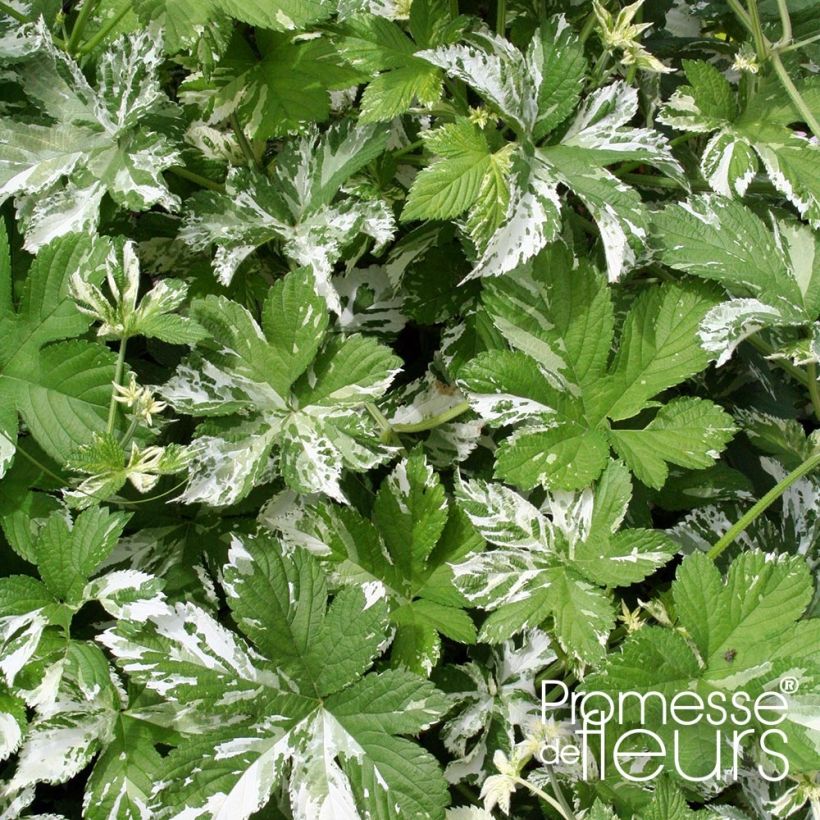

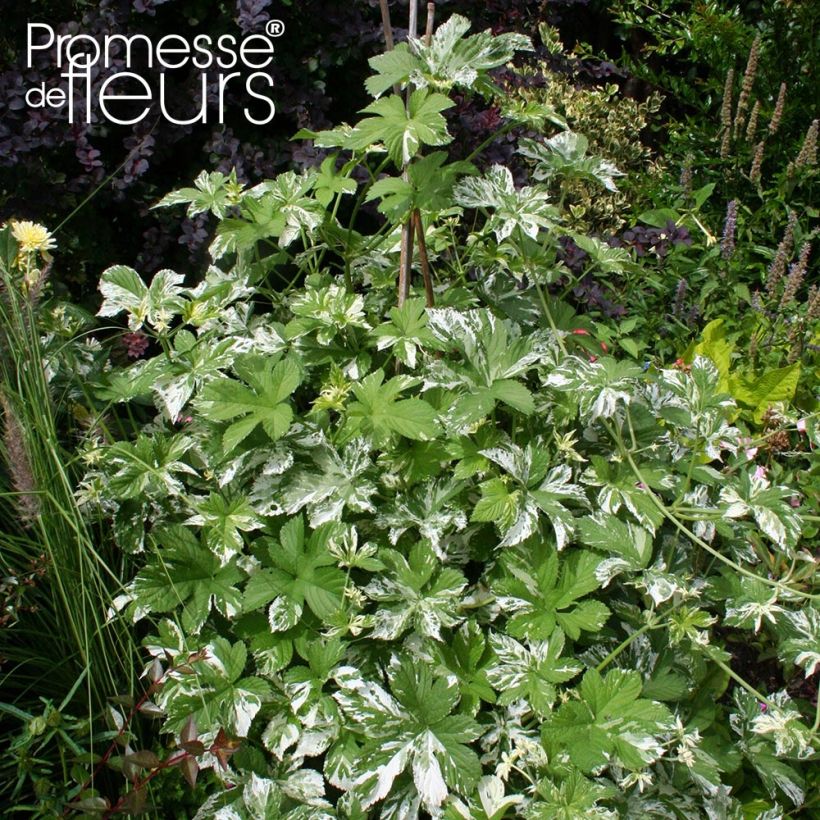

Flowering
Foliage
Plant habit
Botanical data
Humulus
japonicus
Variegatus
Cannabinaceae
Japanese Hop, Variegated Japanese Hop
Cultivar or hybrid
Other Humulus - Hop
Planting and care
The 'Variegatus' Japanese hop is easy to grow in ordinary and deep soil and can tolerate all exposures with a preference for partial shade. This variety tolerates sunny exposures quite well, except in the hottest areas. The plant shows a preference for clay-limestone and very fertile soils, rich in humus. Plant the Hop in soil that remains moist and provide it with a good base fertiliser at planting. Provide a good mulch at its base. It attaches itself thanks to the small hooks present on the twining stems. Install a trellis if you want to cover a wall, help them at the beginning to move in all directions to evenly cover their support. The stems easily detach from their support in autumn, as they dry out and die with the first frosts. Prune your plant every year to 25cm (10in) in height, in February or March; remember to remove (and possibly replant) the suckers that would otherwise become invasive.
Planting period
Intended location
Care
This item has not been reviewed yet - be the first to leave a review about it.
Shade-loving climbers
Haven't found what you were looking for?
Hardiness is the lowest winter temperature a plant can endure without suffering serious damage or even dying. However, hardiness is affected by location (a sheltered area, such as a patio), protection (winter cover) and soil type (hardiness is improved by well-drained soil).

Photo Sharing Terms & Conditions
In order to encourage gardeners to interact and share their experiences, Promesse de fleurs offers various media enabling content to be uploaded onto its Site - in particular via the ‘Photo sharing’ module.
The User agrees to refrain from:
- Posting any content that is illegal, prejudicial, insulting, racist, inciteful to hatred, revisionist, contrary to public decency, that infringes on privacy or on the privacy rights of third parties, in particular the publicity rights of persons and goods, intellectual property rights, or the right to privacy.
- Submitting content on behalf of a third party;
- Impersonate the identity of a third party and/or publish any personal information about a third party;
In general, the User undertakes to refrain from any unethical behaviour.
All Content (in particular text, comments, files, images, photos, videos, creative works, etc.), which may be subject to property or intellectual property rights, image or other private rights, shall remain the property of the User, subject to the limited rights granted by the terms of the licence granted by Promesse de fleurs as stated below. Users are at liberty to publish or not to publish such Content on the Site, notably via the ‘Photo Sharing’ facility, and accept that this Content shall be made public and freely accessible, notably on the Internet.
Users further acknowledge, undertake to have ,and guarantee that they hold all necessary rights and permissions to publish such material on the Site, in particular with regard to the legislation in force pertaining to any privacy, property, intellectual property, image, or contractual rights, or rights of any other nature. By publishing such Content on the Site, Users acknowledge accepting full liability as publishers of the Content within the meaning of the law, and grant Promesse de fleurs, free of charge, an inclusive, worldwide licence for the said Content for the entire duration of its publication, including all reproduction, representation, up/downloading, displaying, performing, transmission, and storage rights.
Users also grant permission for their name to be linked to the Content and accept that this link may not always be made available.
By engaging in posting material, Users consent to their Content becoming automatically accessible on the Internet, in particular on other sites and/or blogs and/or web pages of the Promesse de fleurs site, including in particular social pages and the Promesse de fleurs catalogue.
Users may secure the removal of entrusted content free of charge by issuing a simple request via our contact form.
The flowering period indicated on our website applies to countries and regions located in USDA zone 8 (France, the United Kingdom, Ireland, the Netherlands, etc.)
It will vary according to where you live:
- In zones 9 to 10 (Italy, Spain, Greece, etc.), flowering will occur about 2 to 4 weeks earlier.
- In zones 6 to 7 (Germany, Poland, Slovenia, and lower mountainous regions), flowering will be delayed by 2 to 3 weeks.
- In zone 5 (Central Europe, Scandinavia), blooming will be delayed by 3 to 5 weeks.
In temperate climates, pruning of spring-flowering shrubs (forsythia, spireas, etc.) should be done just after flowering.
Pruning of summer-flowering shrubs (Indian Lilac, Perovskia, etc.) can be done in winter or spring.
In cold regions as well as with frost-sensitive plants, avoid pruning too early when severe frosts may still occur.
The planting period indicated on our website applies to countries and regions located in USDA zone 8 (France, United Kingdom, Ireland, Netherlands).
It will vary according to where you live:
- In Mediterranean zones (Marseille, Madrid, Milan, etc.), autumn and winter are the best planting periods.
- In continental zones (Strasbourg, Munich, Vienna, etc.), delay planting by 2 to 3 weeks in spring and bring it forward by 2 to 4 weeks in autumn.
- In mountainous regions (the Alps, Pyrenees, Carpathians, etc.), it is best to plant in late spring (May-June) or late summer (August-September).
The harvesting period indicated on our website applies to countries and regions in USDA zone 8 (France, England, Ireland, the Netherlands).
In colder areas (Scandinavia, Poland, Austria...) fruit and vegetable harvests are likely to be delayed by 3-4 weeks.
In warmer areas (Italy, Spain, Greece, etc.), harvesting will probably take place earlier, depending on weather conditions.
The sowing periods indicated on our website apply to countries and regions within USDA Zone 8 (France, UK, Ireland, Netherlands).
In colder areas (Scandinavia, Poland, Austria...), delay any outdoor sowing by 3-4 weeks, or sow under glass.
In warmer climes (Italy, Spain, Greece, etc.), bring outdoor sowing forward by a few weeks.

































